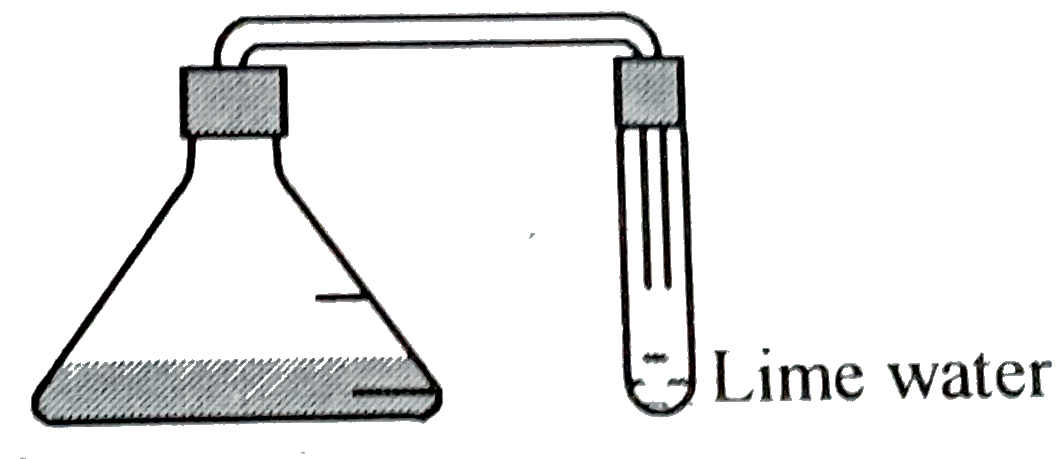The break-down of glucose in a cell occurs in any of the following pathways :

Three experiments (A, B, C) have been set up. In each experiment, a flask contains the organism in growth medium, glucose and a brown dye that changes its colour to yellow when the pH decreases. The mouth of the flask is attached to a test tube containing lime water (Calcium hydroxide , as shown in the figure) . In C, but not in A and B , air is removed from the flask before beginning the experiment.
After a period of growth, the following observation were made :
A : Lime water turns milky , the dye colour remains the same
B : The dye colour changes , lime water does not turn milky
C : Lime water turns milky , the dye colour remains the same

(a) Question : Identify which of the reactions is the pathways depicted above is taking place in each experiment . Give reasons for your answer .
(b) Question : Identify which of the reactions in the pathways depicted above is expected to occur in Red Blood Cells (RBCs)
Video Solution
Text Solution
(a) In experiment A, ethanol fermentation occurs producing CO2, turning lime water milky. Since acid is not produced the dye colour does not change.
In experiment B, lactic acid fermentation takes place, which produces acid but does not produce CO2. Hence dye colour changes to yellow but the lime water does not turn milky.
In Experiment C, since the lime water turns milky, ethanol fermentation is occurring. In addition, since removal of air did not affect the reaction, the fermentation is anaerobic and yeast must be the organism in the flask.
(b) In RBCs, lactic acid fermentation occurs.
|
Topper's Solved these Questions
Similar Questions
Knowledge Check
When air is blown from mouth into a test - tube containing lime water, the lime water turned milky due to the presence of
AoxygenBCO2CN2DWater vapourWhen air is blown from mouth into a test - tube containing lime water, the lime water turned milky due to the presence of
AoxygenBcarbon dioxideCnitrogenDwater vapourWhen air is blown from mouth into a test - tube containing lime water, the lime water turned milky due to the presence of
AoxygenBcarbon dioxideCnitrogenDalcohol
Why is a delivery tube attached to the flask while determining the boiling points of water ?
View SolutionWhy is a delivery tube attached to the flask while determining the boiling points of water ?
View SolutionSwan neck flask experiment proved :
View SolutionTwo reactants in a flask at room temperature are producing bubbles of a gas that turn limewater milky. The reactants could be
View SolutionSwan-necked flask experiment was performed by
View Solution

